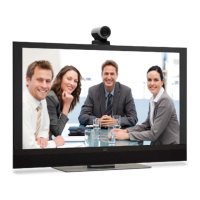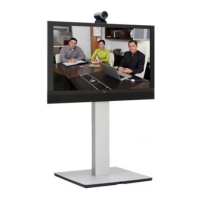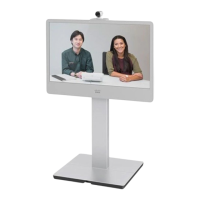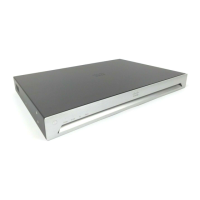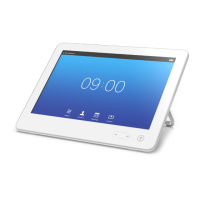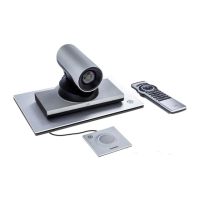D15119.02 MX700 and MX800 Administrator Guide TC7.2, AUGUST 2014. www.cisco.com — Copyright © 2014 Cisco Systems, Inc. All rights reserved.
116
Cisco TelePresence MX700 and MX800 Administrator Guide
Video Monitors
Set the monitor layout mode.
Requires user role: ADMIN
Value space: MX800 <Single/DualPresentationOnly> MX700: <Dual/TriplePresentationOnly>
Single: The same layout is shown on all monitors.
DualPresentationOnly: All participants in the call will be shown on the integrated monitor,
while the presentation (if any) will be shown on the second monitor.
Dual: The layout is distributed on the two integrated monitors.
TriplePresentationOnly: All participants in the call will be shown on the integrated monitors,
while the presentation (if any) will be shown on the third monitor.
Example:
Video Monitors: Dual
Video OSD LanguageSelection
This has been replaced with the UserInterface OSD LanguageSelection setting.
Video OSD EncryptionIndicator
This has been replaced with the UserInterface OSD EncryptionIndicator setting.
Video OSD LoginRequired
This has been replaced with the UserInterface OSD LoginRequired setting.
Video Output Connector [2] CEC Mode
This setting only applies to MX800.
This video output (HDMI) supports Consumer Electronics Control (CEC). When this setting is
On (default is Off), the system will use CEC to set the monitor in standby when the system itself
enters standby. Likewise the system will wake up the monitor when the system itself wakes up
from standby. The monitor connected to the HDMI output must be CEC compatible and CEC
must be configured on the monitor for this to happen.
Note that the different manufacturers uses different marketing names for CEC, for example
Anynet+ (Samsung); Aquos Link (Sharp); BRAVIA Sync (Sony); HDMI-CEC (Hitachi); Kuro Link
(Pioneer); CE-Link and Regza Link (Toshiba); RIHD (Onkyo); HDAVI Control, EZ-Sync, VIERA Link
(Panasonic); EasyLink (Philips); and NetCommand for HDMI (Mitsubishi).
Requires user role: ADMIN
Value space: <Off/On>
Off: Disable CEC control
On: Enable CEC control
Example:
Video Output Connector 2 CEC Mode: Off
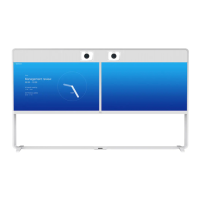
